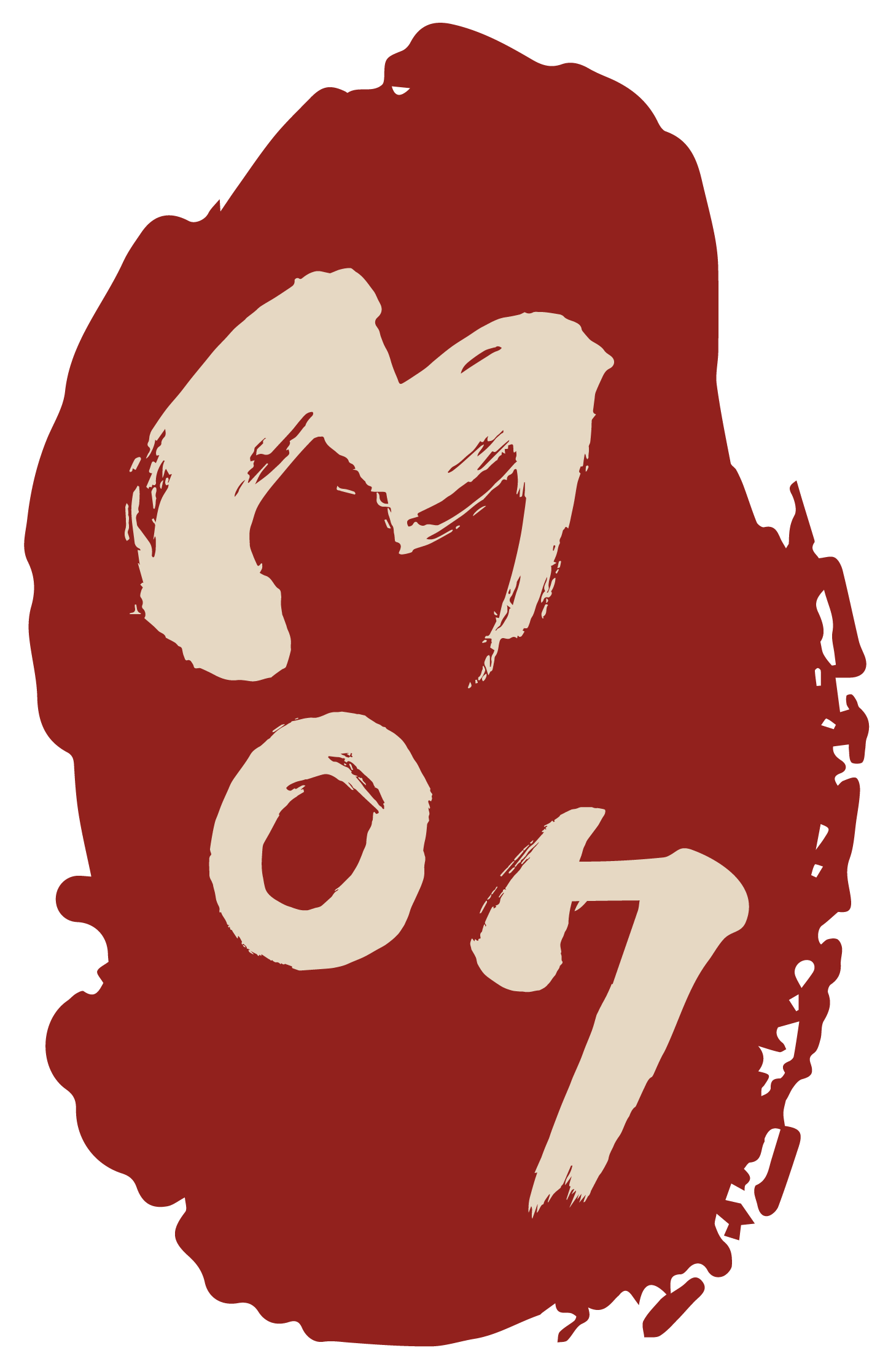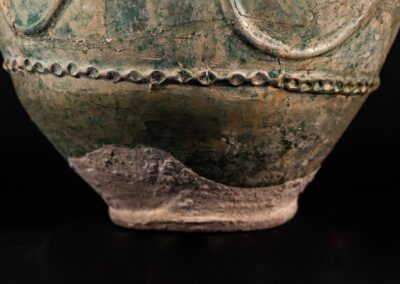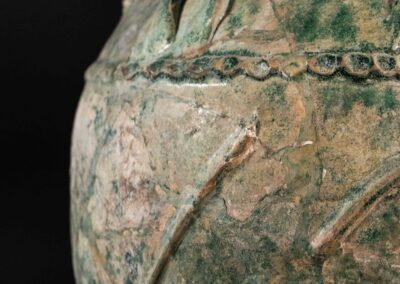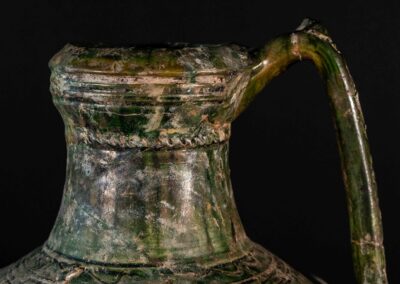Big Green Storage Jar
Pottery
The bulbous jar with a handle is built up in different parts: the long neck, the body with three sections and a small unglazed standing area. The color is turquoise/green, but partly worn. Small cracks. Used for storing of food or water.
Object ID
Persia_004
Age
Iraq (3rd – 8th century)
Material
Ceramics
Color
turquoise/green
Diameter
33.3 cm
Height
(coming soon)
Neck diameter
8 cm
Bottom diameter
14.5 cm
Condition
Fair. Small cracks.
Description
The bulbous jar with a slightly angular handle is built up in different parts: the long neck, the body with three sections and a small unglazed standing area. The color is turquoise-green, and partly worn. The handle has a notches decoration.
The decorated handle extends from the mouth to the shoulder. Around the upper neck is a decoration with circle lines and a decor relief-like band. Then follows a smoothly glazed piece of the neck. There is another bordure around the transformation from neck to shoulder. Then follow three different areas with ornaments: engraved patterns, horseshoe-shaped ornaments, wave-similar patterns a so-called „snake-thread“. Added are there on the neck and on the body decoration tapes in the form of wavy ribbons framed by two surroundings with rice-shaped facets. The lower part of the vessel is without glaze, white clay is visible. Traces from repairing are visible.
The kind of decoration on wavy ribbons is known from glass design in the 3th and 4th centuries AD in Mesopotamia (Sasanid period). [1] The decoration in the shape of „sneak – threads“ is sometimes also typical for Roman glass. [2]
The kind of glaze is typical for ceramic production in the Sassanid Empire. The shape of this pot corresponds to a form that was probably taken from the Syriac Roman tradition. [3] (HV)
________________________
[1] Negro Ponzi, Mariamaddalena (2003): 162 Vase. In: Seipel, Wilfried (Hg.): 7000 Jahre persische Kunst. Meisterwerke aus dem Iranischen Nationalmuseum in Teheran. Antikenmuseum Basel und Sammlung Ludwig GmbH Bonn, Skira editore Milano, Kunsthistorisches Museum Wien. 294 – 295
[2] Fünfschilling, Sylvia (2015): Die römischen Gläser aus Augst und Kaiseraugst. Kommentierter Formenkatalog und ausgewählte Neufunde 1981 – 2010 aus Augusta Raurica. Text- und Formenkatalog. Forschungen in Augst 51. Hg. Augusta Raurica. 77 – 85
[3] Willetts, William (1968): Das Buch der chinesischen Kunst. Von der Jungsteinzeit bis heute. Econ Verlag Düsseldorf/Wien. 320












